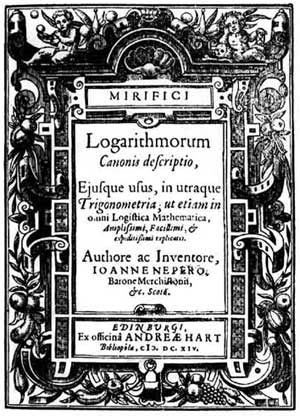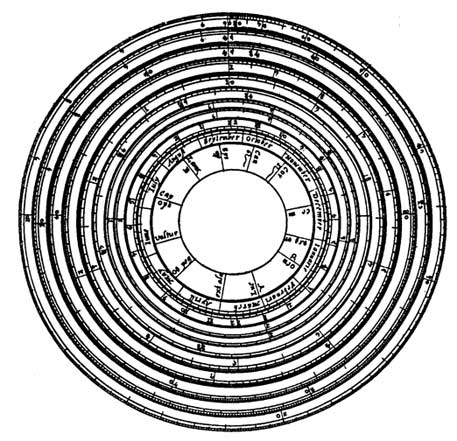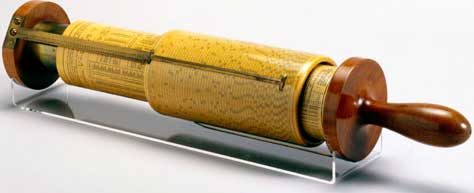What are Logarithms: Complete Explanation
A logarithm is the power which a certain number is raised to get another number. Before calculators and various types of complex computers were invented it was difficult for scientists and mathematicians to calculate extremely large numbers. Logarithms could help them accomplish this.
The following provides several examples.
Four to the fifth power is written as follows: 45 = 1024.
It can also be written out in the following manner: 4 x 4 x 4 x 4 x 4 = 1024.
Another way to explain it is to state that 4 to the power of 5 means 4 is multiplied 5 times.
It’s sometimes difficult for those who don’t specialize in mathematics to understand how logarithms fit into and relate to the real world. Logarithms, however, are used throughout science and mathematics to find solutions to a variety of difficult problems. Much of the time the numbers used in logarithms are much larger than the ones used in the above examples.

Logarithms: An Exact Definition
A precise definition for a logarithm is a power or exponent for a specific number that is raised to produce another specific number. Logarithms are most succinctly described as a shortcut in mathematics. For example, multiplication is basically a shortcut for addition and exponents are a shortcut for multiplication. Logarithms are a shortcut for exponents.
There are patterns in logarithms that are fairly easy to understand. For example, the logarithm of 100 to base 10 is 2. The logarithm of 1000 to base 10 is 3. It’s also important to understand natural logarithms which explain logarithms from both a time and growth perspective. Logarithms were in use for hundreds of years until mechanical machines were able to calculate larger numbers in the late 19th century, and eventually, computers took over the task in the 20th century.

How do Logarithms Work?
Logarithms work by providing a method that allows more complex mathematical operations such as multiplication, division, and calculating of a root to be done by means of addition and subtraction. All numbers can be expressed in what is now called exponential form, meaning 8 can be written as 2, 25 as 5, and so on.
What makes logarithms so useful is the fact that the operations of multiplication and division are reduced to simple addition and subtraction. When very large numbers are expressed as a logarithm, multiplication becomes the addition of exponents. Logarithms speed up and simplify calculations. Using them can greatly reduce the amount of time needed to multiply large numbers.
Scientists can find the product of two different numbers, x and y, by looking up each number’s individual logarithm, adding the logarithms together, and then consulting a table to find the exact number with that calculated logarithm. This is called its antilogarithm.
There are also logarithmic laws or rules that are used to help guide those who are using logarithms. Different tables will include different laws or rules associated with logarithms. The MathCentre includes some of the most basic rules regarding logarithms.

How do you create logarithms?
Creating logarithms starts with understanding basic formulas such as the following.
log2 16 = 4, because 24 = 2 × 2 × 2 × 2 = 16
Creating logarithms is based on the understanding that multiplying or dividing numbers in a geometric progression relates to addition or subtraction of the corresponding numbers. We can better understand the process as part of the laws of exponentiation. Putting these numbers into a table will make difficult calculations easier.
There are several steps that need to be followed when creating logarithms from data. The process can be started by putting input values in one column and output values in another column in order to perform logarithmic regression. There are also log graphs that represent logarithms. One type of graph might include using a logarithmic scale on one axis and a linear scale on the other.
Logarithmic functions can be understood as basically the inverse function of exponentiation. The logarithmic function is f(x) = log b(x). The constant “b” is the base of the logarithm. Another way to understand this concept is when graphing both a logarithmic function and the inverse function, it is also graphing the line y = x. The inverse function and its logarithmic function are symmetrical.

Who Created Logarithms?

The concept of logarithms was known in ancient Babylonia at approximately 1800 B.C. Clay tablets were discovered that contained tables with successive powers of whole numbers. Scotsman, John Napier, however, is credited with the title of inventor for understanding how logarithms actually work.
In 1594 Napier started working on trigonometric tables and spent twenty years refining them. His greatest mathematical work Mirifici Logarithmorum Canonis Descriptio (Description of the Marvelous Canon of Logarithms) was published in 1614 and discusses logarithms.
At the end of 1614 one of the most famous English mathematicians of the day, Henry Briggs (1561-1631), who was a Professor of Geometry at Gresham College, London, obtained a copy of Napier’s Descriptio and, by March of the following year wrote that:
“Napier, lord of Markinston, hath set my head and hands at work with his new and admirable logarithms. I hope to see him this summer, if it please God; for I never saw a book which pleased me better, and made me more wonder.“
Napier died in 1617 and Henry Briggs went on to publish a table of logarithms calculated up to 14 decimal places in 1624. These were for numbers from 1 to 20,000 as well as those for numbers from 90,000 to 100,000. Adriaan Vlacq, a Dutch publisher, created a table that added the missing 70,000 values.



While there were others, including Joost Bürgi (1552-1632), who contributed to the principles of logarithms, Napier is normally considered by most historians to be the primary inventor who presented in the most clear and simple manner the original conception of logarithms. It’s important to note that Napier looked at logarithms not through the lens of algebra, but by way of geometry.
Many scientists and mathematicians through the centuries were able to build on the initial work of Napier, Briggs, and Bürgi and expand understanding in the field of mathematics and create a variety of instruments still in use today. This includes Edmund Gunter’s logarithmic scales and William Oughtred’s slide rule and circular slide rule.
What Are the Applications of Logarithms?
There are many examples and practical uses for logarithms. One of the primary applications is finding a solution to exponentiation problems. The table of logarithms, put together by Henry Briggs in 1617, can help individuals complete the steps when solving logarithmic mathematics problems. This was shortly after Napier’s invention, but this table used 10 as the base. Briggs’ first table included the basic logarithms of all integers from 1 to 1000.
The slide rule, which was a pair of divided scales used for calculating, was an application of logarithms. Without the aid of a calculator, a slide rule can solve problems by utilizing number lines.
Several laws and theories included the use of logarithms. Examples include the probability theory and laws regarding fair coin tosses. The proportion of heads vs. tails is based on the law of the iterated logarithm.
Examples of Logarithms In the Real World
There are several specific examples of logarithms in real-world practice.
- Measuring Earthquakes – Logarithmic functions are part of the Richter scale, which is used to measure the magnitude of earthquakes. This is specifically related to how much energy is released during the quake. Seismographs detect movements in the earth. Because of the logarithmic system of the scale, each whole number increase in the magnitude of the quake signifies a tenfold increase in amplitude.
- Measuring Sound Decibels – Decibel measures are another example of the use of logarithms. According to Physclips, the decibel is a logarithmic unit for measuring sound levels. It’s also often used in electronics and in the field of communication.
- Measuring pH Balances – Logarithms in chemistry can be used to measure the acidity and alkalinity of various substances. There are worksheets that show different substances and the logarithmic formulas that are used to calculate pH.

